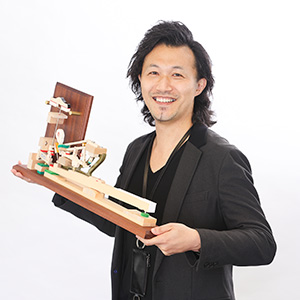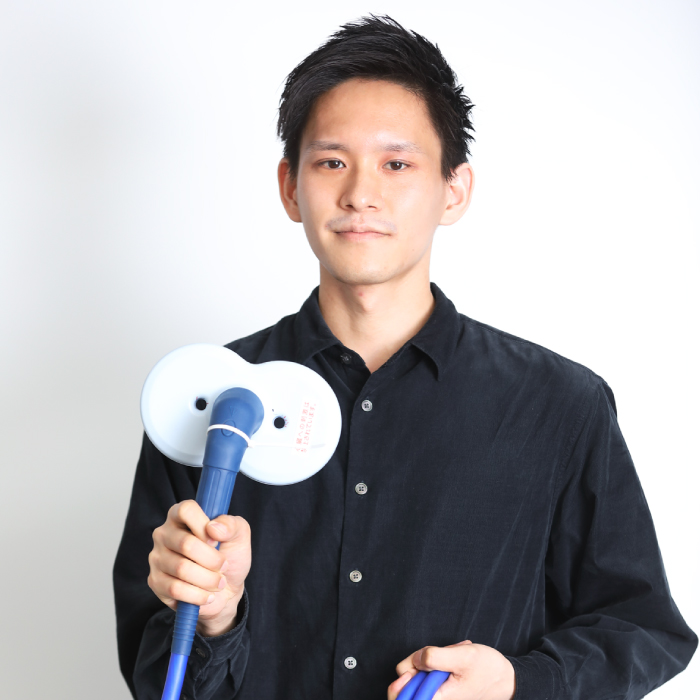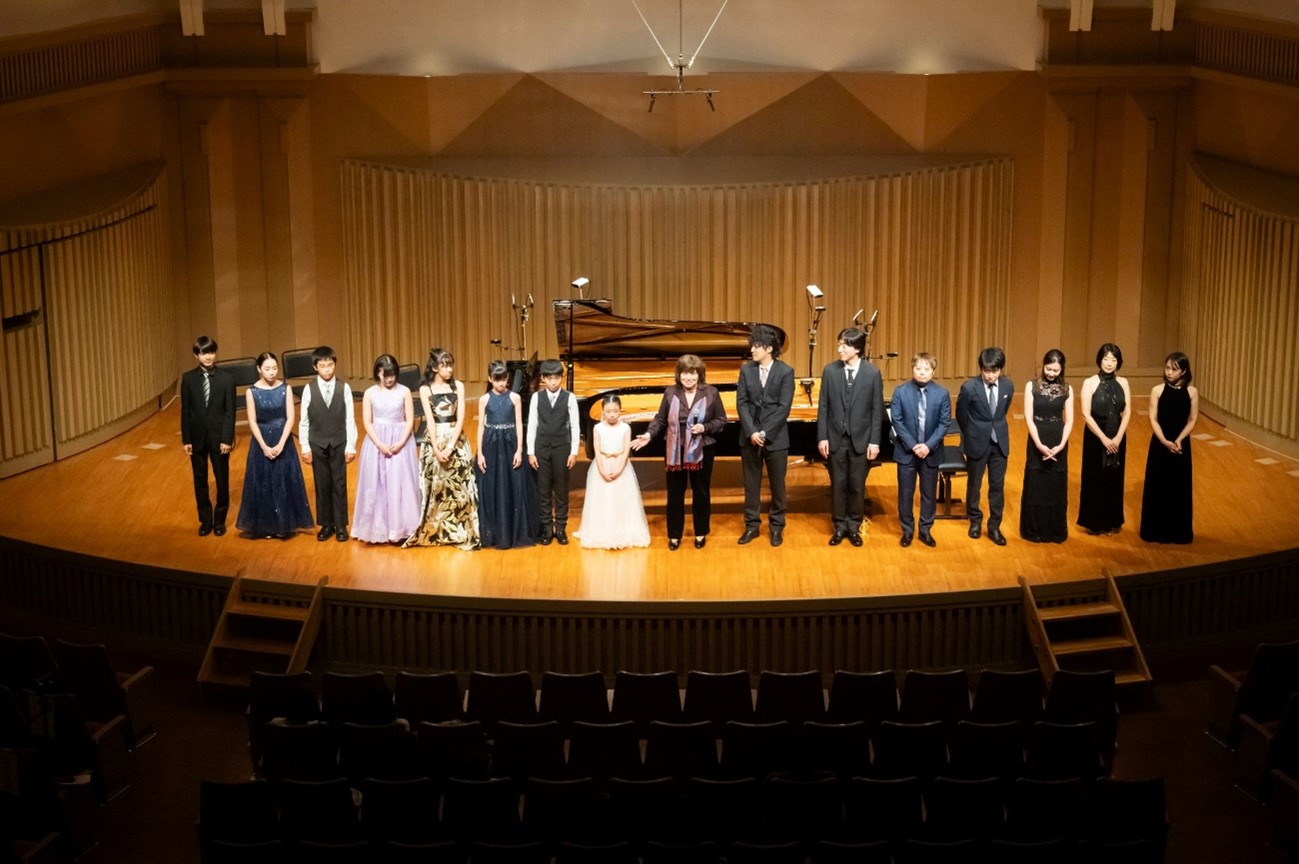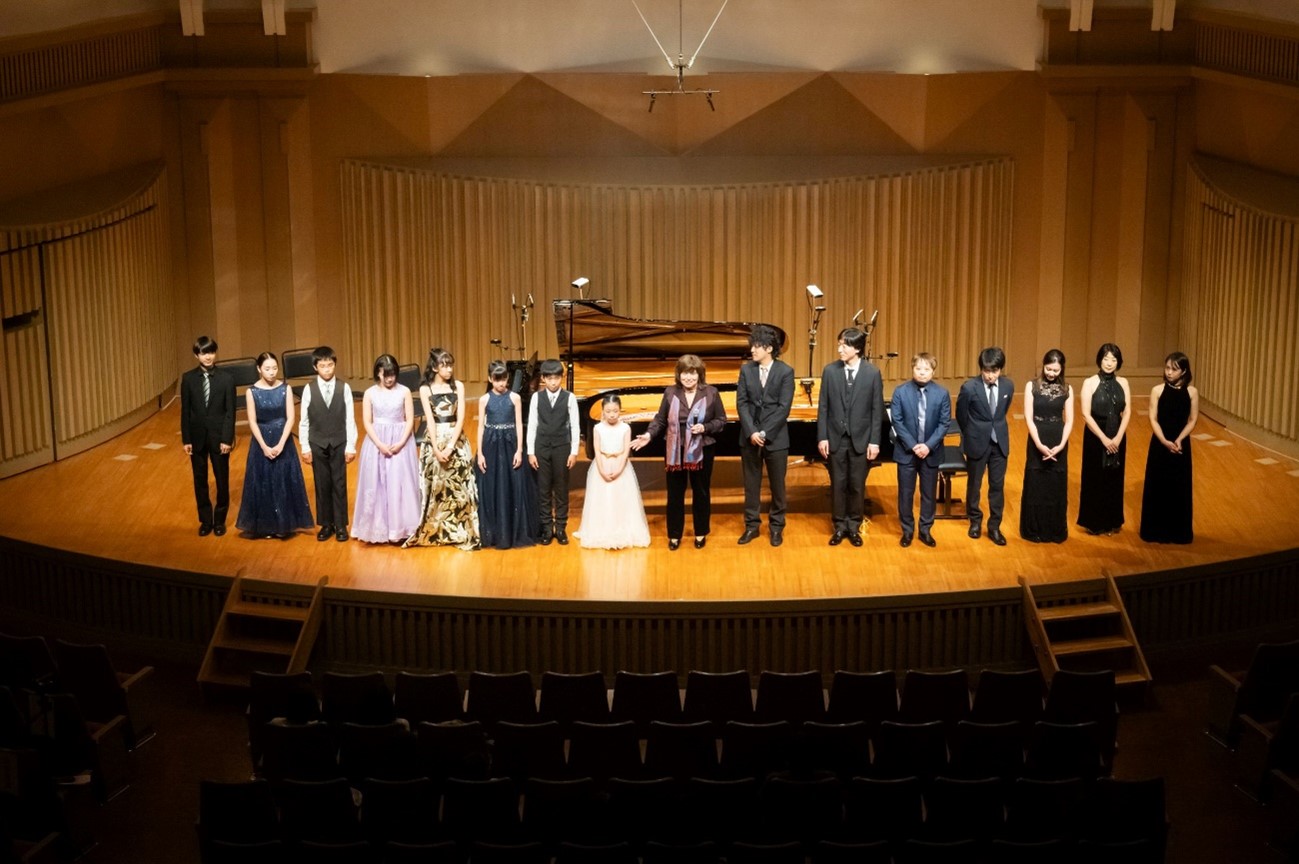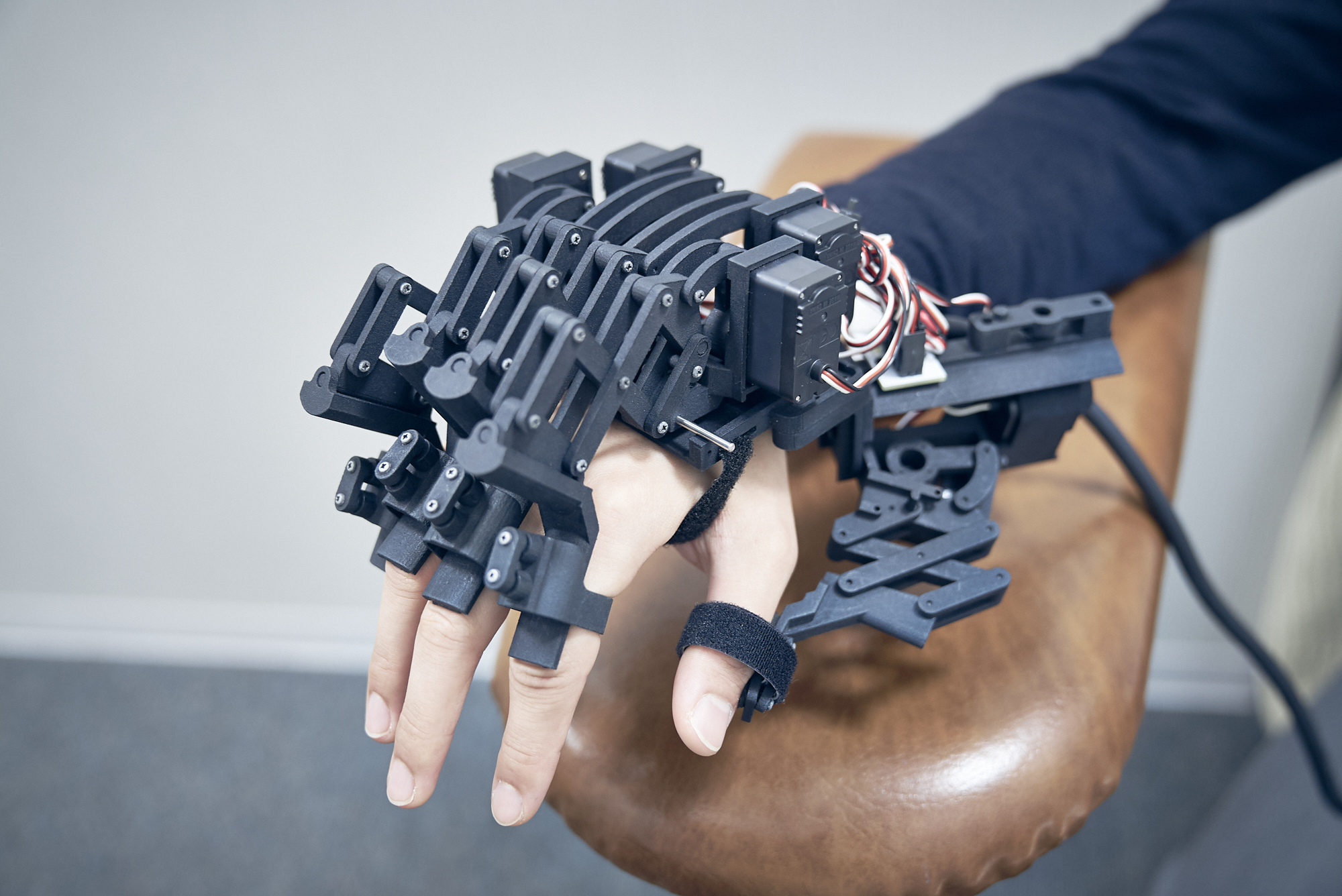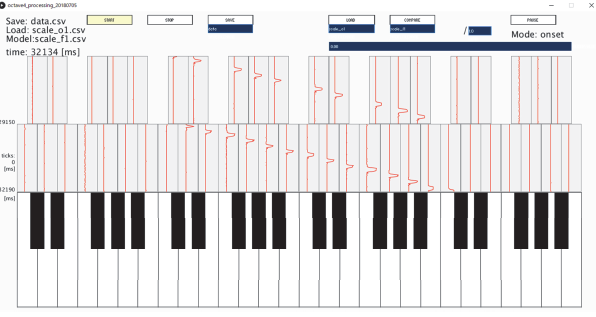ダイナフォーミックスとは…
ダイナフォーミックスとは、音楽家の熟達支援と故障予防を通して、音楽表現の進化と持続可能性の実現を目指す研究の取り組みです。この取り組みが目指すものは、音楽家が身体を痛めることなく、多種多様な演奏表現を創造するための最適なトレーニングや練習方法を確立し、技能の熟達と生体機能の向上を支援し、故障を解決・予防することです。
音楽研究の背景
豊かな演奏表現を健やかに実現するには、「感性」、「解釈」、「機能」、「技能」の4要素を育むことが重要です。
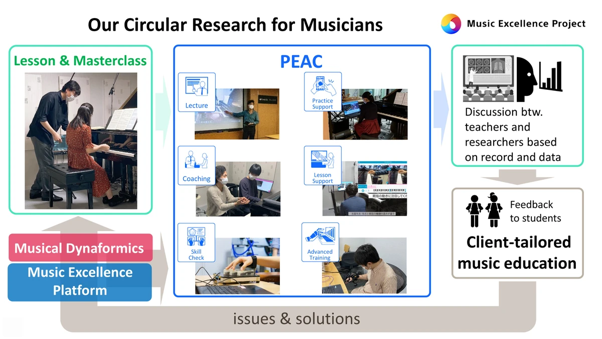
「感性」や「解釈」は、音楽性や音楽理論を中心とした音楽教育において既に活発に研究がなされており、音大などの教育機関でも和声学やアナリーゼなどの講義が世界中で実施されています。
一方で、音楽家の心身の「機能」や「技能」を育むための身体教育の研究教育基盤は未だ確立されていません。
「機能」や「技能」の体得といっても、様々な要素や次元があります。例えば、思い描いたように弾くためには、聴覚情報や力触覚情報を正確に動きに変換できる機能を育まなければなりません。また、ピアノを弾くときに指を素早く正確に動かすためには、複数の筋肉を協調させることが求められ、多様な表現を生み出すためには、複数の筋肉を独立に制御することが必要です。
しかしながら、音楽文化にはそのような体系立てられた身体教育や、それを支える研究開発が欠けています。
その結果、音楽家は長時間の練習にもかかわらず、心に思い描いた豊かな音楽表現を演奏によって創造できない問題が起こってしまいます。演奏できたとしても、それを指導する際に、形式知化して次世代に継承できないこともよく起こります。さらに、練習や演奏する過程で身体を痛めてしまう問題も後を絶ちません。
スポーツ科学との比較
スポーツ分野では、スポーツ科学や栄養学、トレーニングやコーチングといった様々な学問が発展し、アスリートの成績向上や故障の解決を実現してきました。
一方、音楽の分野はどうでしょうか?演奏家が練習に練習を重ねても創造性を十分に発揮できずに苦しむ問題や、練習や演奏する過程で身体を痛めてしまう問題が後を絶ちません。
その背景には、演奏に対する研究がスポーツほど十分に行われていないことがボトルネックであると考えられます。
ダイナフォーミックスの意義
ダイナフォーミックスは、研究を通して、エビデンスに基づく身体教育を実現し、芸術教育との相乗効果を生み出して、音楽家のクリエイティビティを拡張することに取り組んでいます。
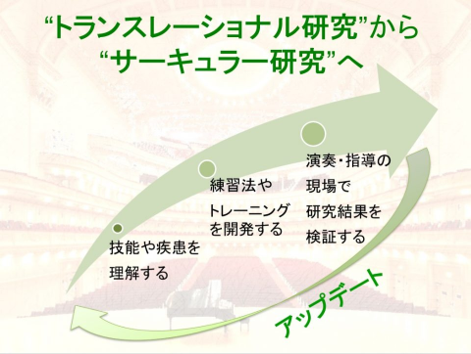
ダイナフォーミックスでの研究成果は、国内外の音楽教育機関などの演奏や指導の現場に、身体教育を通して一気通貫で社会実装します。そこで得られた知見や現場からの声に基づき、研究開発をさらに改善する「サーキュラー・リサーチ」をシームレスに循環させます。数世紀に渡り受け継がれてきた音楽表現や技能、知識を進化させ、次世代に継承していける研究教育基盤を確立し、文化的に持続可能で成熟した世界を構築することを目指しています。
ダイナフォーミックスによって、音楽家は表現を拘束していた身体の諸問題から解放され、より素晴らしい表現を新たに生み出すことが期待されます。音楽演奏を、身体のステージから表現のステージに進め、クリエイティビティを拡張することが、ダイナフォーミックスの重要なミッションです。
Musical Dynaformics is a discipline aimed at supporting the mastery of musical expertise and preventing injuries toward a vision of realizing sustainable development of musical expression. The goal of this discipline is to establish optimal training and practice methods that allow musicians to create a variety of performances without harming their bodies, supporting mastery of skills and improvement of biological functions while preventing injuries.
Background of Music Dynaformics

Mastering virtuosic performance requires music education and physical education targeting four essential areas: musicality, interpretation, biological functions and technical skills.
Traditionally, "musicality" and "interpretation" have been covered in many areas of music education and research disciplines. Lectures on harmony and analysis have been provided at educational institutions worldwide.
Biological functions and technical skills associated with virtuosic musical performances, on the other hand, have not been provided sufficiently or studied empirically.
Such functions and skills are characterized by the co-optimization of speed and accuracy of movements, independent and coordinated movement control between the fingers and hands, and the integration of multimodal sensory and motor information in a real-time manner.
If musicians attempt to acquire those functions and skills through extensive hours and years of deliberate practice, without proper knowledge and methods, they not only lose opportunities acquiring virtuosity, but also potentially suffer from movement disorders and injuries such as focal dystonia. Even those who successfully acquire virtuosity cannot pass on explicit knowledge and methods to the next generation.
Comparison with Sports Science
In the field of sports, various disciplines such as sports science, nutrition, training, and coaching have developed, leading to improvements in athletes' performance and solutions to injuries. By contrast, what about in the field of music? The issues of musicians struggling to fully embody their creativity despite undergoing repeated practice and injuring themselves during practice continue to persist. The bottleneck behind this is that scientific research on musical performance has not been systematically performed, unlike sports science.
Significance of Musical Dynaformics
Musical Dynaformics gives musicians unique opportunities to express themselves without physical constraints, leading to the creation of wonderful novel musical expression. Its primary mission is to move musical performance forward, from the stage of body, to the stage of expression.
Research outcomes are fed back to educators and musicians at conservatories and institutions worldwide. Based on the knowledge gained and feedback from the field (i.e. practicing and teaching), we will seamlessly accelerate the "circular research" that further improves research and development in a goal-directed manner. Science for musicians will make it possible for musicians to acquire skills to embody their creativity and pass it on to the next generation, granting our world cultural enrichment through the coevolution of an open system forming artists, educators, and the audience.

